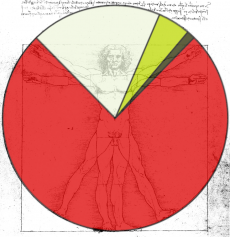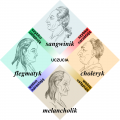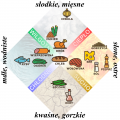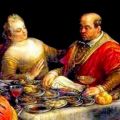Jeść zdrowo i z humorem: Różnice pomiędzy wersjami
Przejdź do nawigacji
Przejdź do wyszukiwania
| Linia 28: | Linia 28: | ||
* [https://shakespeareandbeyond.folger.edu/2015/12/04/the-four-humors-eating-in-the-renaissance/ The Four Humors: Eating in the Renaissance] | * [https://shakespeareandbeyond.folger.edu/2015/12/04/the-four-humors-eating-in-the-renaissance/ The Four Humors: Eating in the Renaissance] | ||
** [https://luna.folger.edu/luna/servlet/detail/FOLGERCM1~6~6~480624~133350 Obrazek] | ** [https://luna.folger.edu/luna/servlet/detail/FOLGERCM1~6~6~480624~133350 Obrazek] | ||
* [https://www.atlasobscura.com/articles/ennobling-garlic-italy How ‘Ennobling’ Helped Italian Aristocrats Solve the Problem of Garlic] | |||
== Dla porównania == | == Dla porównania == | ||
=== Ajurweda === | === Ajurweda === | ||
=== Medycyna chińska === | === Medycyna chińska === | ||
Wersja z 16:13, 8 cze 2020
Budowa wszechświata
Humory i temperamenty

Krew (64 części)
Śluz (16 części)
Żółć (4 części)
Czarna żółć (1 część)
Medicine and Society in Early Modern Europe
Dietetyka
-
Już starczy!
Fragment obrazu Leandra Bassano (ok. 1595) -
Sancho Pansa głodzony przez swego lekarza.
Fragment ilustracji Thomasa Cooka i Williama Hogartha do powieści Przemyślny szlachcic Don Kichote z Manchy Miguela de Cervantesa
- Food and Health in Early Modern Europe: Diet, Medicine and Society, 1450-1800
- The Cambridge World History of Food
- The Four Humors: Eating in the Renaissance
- How ‘Ennobling’ Helped Italian Aristocrats Solve the Problem of Garlic





